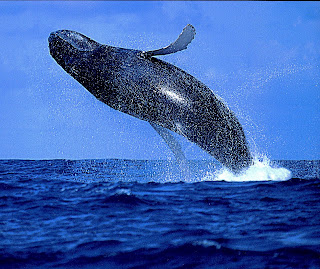
No Time to Relent at Taiji – A Thirty Year Perspective by Hardy Jones, BlueVoice.org
I’ve been going to Taiji since 1980 as well as to other ports where they kill dolphins such as Futo. My first visit to Japan was in 1979 to the island of Iki where a horrific massacre took place before our eyes and more importantly our cameras.
The huge international pressure brought about by the release of our film footage caused the Japanese fishing authorities to withdraw quotas to kill dolphins at Iki and there was no further killing there until the mid 1980s when an emergency permit was granted because dolphin captors from several countries came to the island with money in hand.
When I last visited Iki two years ago I was told there are no longer dolphins in the waters of Iki. I don’t know if they were exterminated or whether warming waters has driven the prey elsewhere. At Iki they would love to have dolphins again – to sell to aquariums.
In 1999 approximately 100 dolphins were captured at Futo, Japan. Some 14 were taken into captivity, others were killed for meat but many were released – probably due to quota restrictions.
THE COVE has caused a huge international outcry and the Japanese are very sensitive to this. Japan is not monolithic on dolphin hunting and whaling. The Ministry of Foreign Affairs, Ministry of Commerce and the Ministry of Tourism all oppose those bloody businesses. But the hugely powerful Japan Fisheries Agency (JFA) prevails and encourages the hunts to continue.
A major fear they have at JFA is that the bloody pictures of the dolphin slaughters will further swing international opinion against whaling which is of far greater importance to them than dolphin hunting.
When the dolphin hunting season opened this year Ric O’Barry brought a busload of reporters to Taiji. No hunting took place while the press was there but very little can be read from that. The dolphin hunters would not kill in front of such a gathering of world media.
Then a group of dolphins and pilot whales was taken. The fifty pilot whales were killed. Some thirty bottlenose dolphins were taken for captivity and the rest let go. This release may or may not indicate a change in policy.
It may help to clarify Taiji’s and the Japan Fisheries Agency’s intentions at Taiji to know that the Japanese use the following words:
Dolphin: iruka - bando iruka for bottlenose dolphins
Pilot whale: ma gondo
Risso’s dolphin: hana gondo
They define the latter two as whales. So they could say they are giving up killing dolphins and still kill pilot whales and other “gondo” in large numbers.
Also, it may be that the Taiji coop is now realizing that they should not kill bottlenose dolphins for meat as they fetch such a high price in the captivity trade. Remember the Iki islanders now wish they had dolphins back and the lesson may not have been lost on the fishermen at Taiji.
Finally, it is not unprecedented for dolphin hunters to release bottlenose dolphins after taking a number of them as captives as at Futo in 1999. Many bottlenose dolphins were released after some taken for captivity and others slaughtered for food.
There is a quota limit on each species which factors into the decision of whether to kill or release so they may release in order to be able to capture more for captivity later in the year.
The Cove has been a bombshell in the faces of dolphin hunters but they may stop killing “dolphins” and turn their blades on “gondo” or simply tone down the kills in the expectation that The Cove will run its course.
The final nail in the coffin of dolphin hunting may be the growing recognition that dolphin meat is highly toxic. The market for it is dwindling. At BlueVoice we continue to test dolphin meat for mercury and organochlorine contamination. We also test human hair for mercury and will soon test the blood of dolphin eaters for organochlorine contamination.
http://bluevoice.org/news_dolphinmeat.php
For now it would be a grave mistake to tell the world that the killing of dolphins at Taiji is over.


